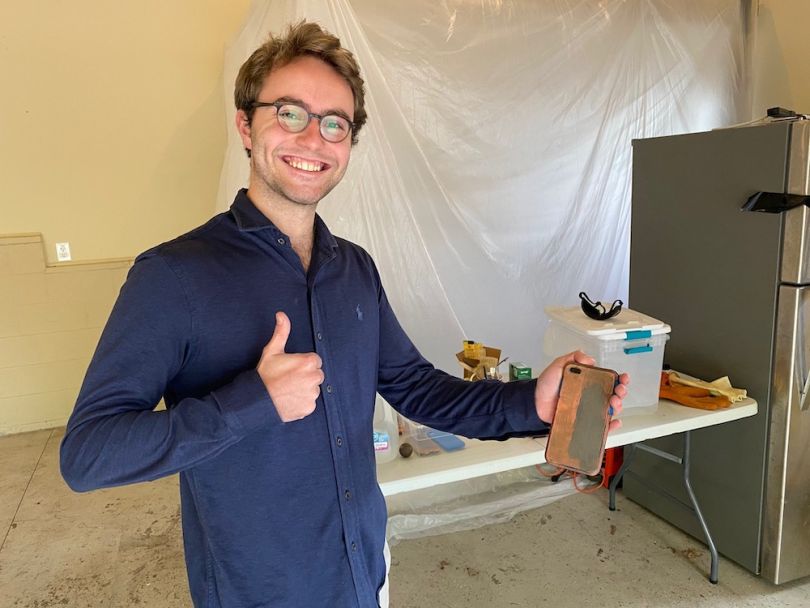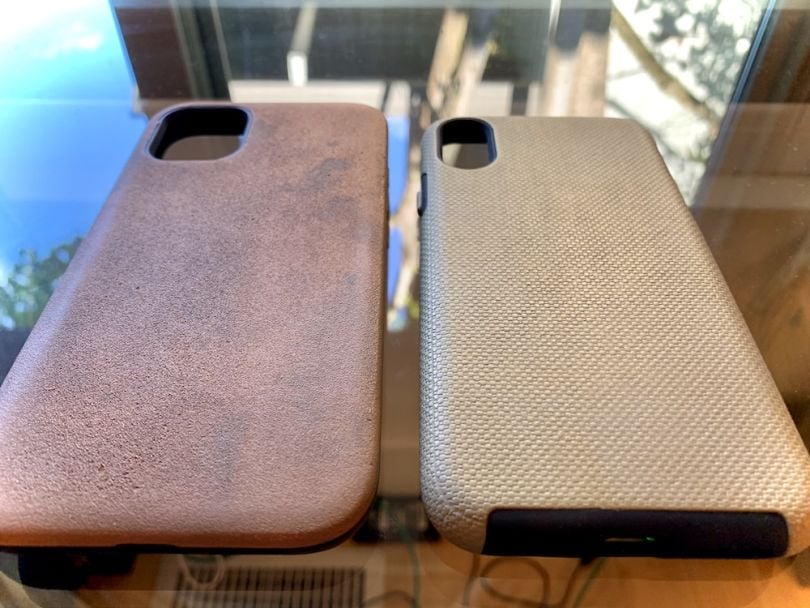We’re currently living in what might be the most exciting time in human history to launch a company. Thanks to major advances in software, founders have more firepower for making their vision a reality than ever before. Yet, in the physical world, as much of life has gone virtual, creating and shipping products has run into a new set of challenges.
Last March, as the world plunged into a pandemic, my co-founders and I were finishing up our final semester of classes on Zoom while quarantining after positive COVID tests. The world around us was reeling. We faced a decision: We could either stand by and watch things unfold or take action to make a difference.
Isaac Lichter, our CEO and a trained engineer, realized that copper was an underused material for fighting bacteria and viruses. Andrew Medland, our COO and a public-health student, recognized the potential benefits of creating antimicrobial surfaces for the things we touch most. I proposed that we develop a phone case — we touch our phones thousands of times per day — that would harness copper’s germ-fighting properties to make our phones safer and less petri-dish-like.
Aeris was born. We took our name from a Latin word that could mean “coin” or “copper” as an homage to the metal’s use in ancient currency. The project began last April as a way to get germ-killing phone cases in the hands of frontline workers. It quickly grew into much, much more, however.
Almost overnight, we appeared on news programs across the country to talk about the project. By June, we had raised over $100,000 from Indiegogo and other investors to fund our growth. We were manufacturing our signature product, Copper Cases, at scale in July, just three months after launching our crowdfunding campaign. The year didn’t slow down. By December, we were featured as a go-to holiday gift on Good Morning America.
None of it was easy. 2020 was a challenging year to do anything, let alone design a physical product and launch a startup around it. Every day introduced a new set of problems to overcome.
Here are four key lessons I learned in the process.

1. Constantly Iterate
The hardest part of getting started was developing a novel product under time constraints and with limited resources. Thanks to COVID, we couldn’t leave the house, and we didn’t have the money to outsource development. So, we took a page from the Lean Startup method and built a minimum viable product (MVP), producing the cheapest, worst functional version of a Copper Case.
The MVP was a 3D-printed TPU and polycarbonate phone case from a CAD file we found online. We set up an electroplating facility in the garage to adhere copper to the case (which I don’t recommend trying at home). And it worked! We uploaded pictures of the MVP to a crowdfunding site and immediately started figuring out how to improve the product.
Since then, we’ve gone through 12 versions of the Copper Case. As we learned, we developed our own patent-pending process for applying the copper composite to hard surfaces. And we’re still improving our technology.
We keep tinkering until we discover breakthroughs that materially enhance the quality of our end product, then ship them like a software update. By constantly iterating, we’re able to push the boundaries of what our products can do and how far we can go to delight our customers. Continuous iteration leads to a better product, faster, which turns the dial on the most important metric for our business: customer satisfaction.

2. Tell a Story
When you’re starting a consumer-facing company, you’re selling more than a product. You’re selling a story about who makes it, why it exists and the type of life that comes with it.
We created Aeris from our garage as three quarantined college students to help support frontline workers. In our minds, using a Copper Case allows a person to go places and experience life without having to worry as much about getting sick. We see the brand as empowering users to make a conscious effort to live an adventurous life free from germs. Our early efforts were so successful because we had a compelling narrative to accompany the product. We shared our story with as many people as we could and found that they started to listen.
Our first breakout success was appearing on Nashville news to talk about our project and tell our story. Not only did this allow us to make a great call to action to support frontline workers, but it directly benefited our crowdfunding campaign, doubling the contributions overnight. This initial success led to numerous follow-up news appearances across the country.
Organic growth is critical at the beginning of a company’s life cycle. It’s the only way to know for sure if there’s a real audience that cares about what you’re doing. Paid advertising is essential for growth, but it’s not a sustainable strategy for going to market. By telling our story, we discovered that there was huge, untapped demand for copper everyday carry products.
Crafting your story takes time. It’s not always immediately obvious that you have a unique, valuable perspective. But if you’re starting a company, chances are that you do and that people are going to listen to you. Invest as much time as you can, as early as you can, in refining your company’s narrative. Be able to tell it convincingly in just a few words. You’ll know you’re onto something when other people start to tell your story for you.
3. No One Is Unreachable
The pandemic has led to increased flexibility in the way people interact in business. One of the most incredible opportunities introduced by the remote work shift is a plethora of new ways to connect with people. With enough sweat, you can speak with your idols in a matter of weeks. Everyone is just a few emails and a Zoom call away.
In order to cut through all the noise in digital communications, we did a lot of research on the people we targeted and crafted unique pitches that we hypothesized would catch their attention. It’s critical to demonstrate that you’ve been paying attention and have a specific reason for reaching out.
We also picked a medium that they cared about; if someone is big on Twitter, we reached out to them there. We went for quality over quantity, but still aimed to send at least one high-value message per day. It’s hard to know how many to send, so it’s best to get in the habit of sending a message every time you discover a new person who could add value to your project. Don’t worry about rejection — getting to “no” is the first step. It’s a sign you’re doing something right. Our default expectation was no response, so a direct rejection was a small win.
Strategically connecting with people who we knew could add value gave us a huge edge as we grew. We were able to draw on decades of collective experience and avoid countless mistakes (though we still made many) along the way.
One of my favorite examples of this is when I shared the project with Balaji Srinivasan, and he immediately posted a link to his 300,000 Twitter followers. That one share drove thousands of clicks to our crowdfunding page, unlocking huge value.
We’ve also forged key investor and advisor relationships through creative cold outreach. There’s no downside and unlimited upside. It’s a cheat code.
4. Remember to Unplug
As a direct-to-consumer e-commerce company, our brand identity is almost entirely digital. Every interaction with our customers, from the time they discover Aeris until they get their package, happens virtually. We live online.
Despite our online nature, running a company that sells physical products requires a lot of offline work as well. Manufacturing, packaging, fulfillment and everything in between all happen in the real world.
It’s easy to focus on optimizing your funnel, making website improvements and sending cold emails, all while checking Twitter every few minutes. You can do it from your couch.
Much harder is getting up, going to the factory and cranking out inventory when there’s a deadline to meet and orders are piling up. Never sacrifice effort or quality on your physical product because you’re so wrapped up in its digital representation. Ultimately, the product is what matters.





